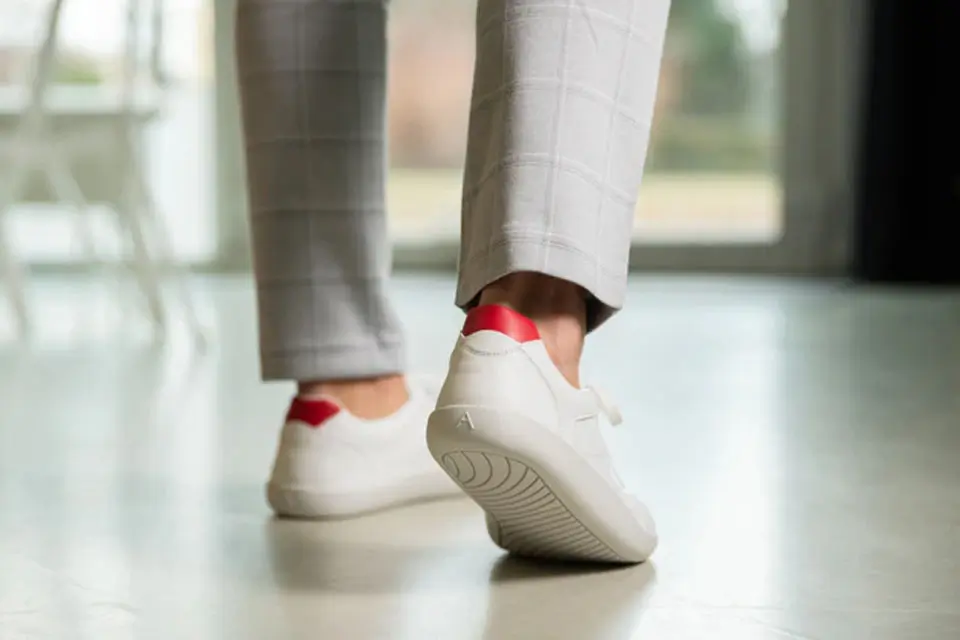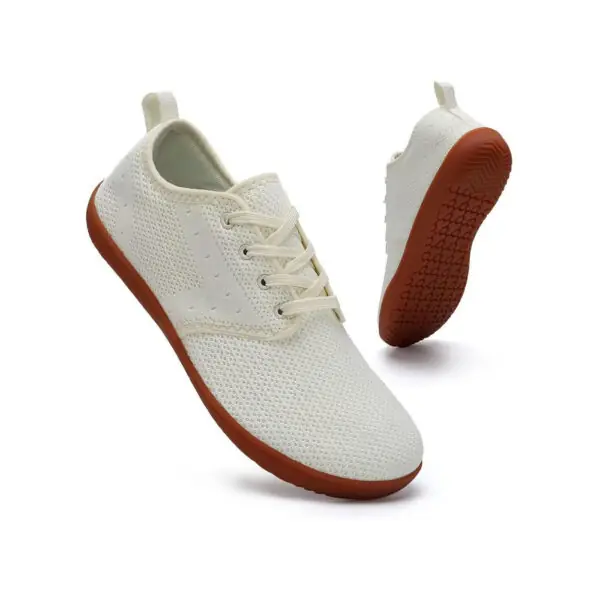
Are Barefoot Shoes Healthy
The Surprising Benefits of Barefoot Shoes: Why You Should Give Them a Try
Are you tired of aching feet, nagging back pain, or the constant search for comfortable shoes? It’s time to step into a new world of footwear that might just revolutionize the way you think about your feet. Barefoot shoes, also known as minimalist shoes, are taking the health and fitness world by storm. In this comprehensive guide, we’ll explore the fascinating benefits of barefoot shoes and why you should consider giving them a try. Whether you’re a runner, a fitness enthusiast, or simply someone who wants healthier feet, this article will provide you with valuable insights into the world of barefoot footwear.

Table of Contents
What Are Barefoot Shoes and How Do They Differ from Traditional Footwear?
Barefoot shoes are a unique type of footwear designed to mimic the experience of walking or running barefoot while still providing protection for your feet. Unlike traditional shoes, barefoot shoes have several distinct features:
- Minimal cushioning: They have very thin soles, allowing you to feel the ground beneath your feet.
- Zero drop: There’s no height difference between the heel and toe, promoting a more natural foot position.
- Wide toe box: This allows your toes to spread naturally, improving balance and grip.
- Flexible material: The shoe bends easily, allowing your foot to move more freely.
Conventional shoes, on the other hand, often have thick soles, raised heels, and narrow toe boxes, which can restrict natural foot movement and potentially lead to various foot issues over time.
The Health Benefits of Barefoot Shoes: What Does the Science Say?
The potential health benefits of barefoot shoes are numerous and backed by growing scientific evidence. Here are some key advantages:
- Improved posture: By allowing your feet to move naturally, barefoot shoes can help align your entire body, potentially reducing back pain and improving overall posture.
- Strengthened foot muscles: Without the artificial support of traditional shoes, your foot muscles work harder and become stronger.
- Enhanced proprioception: The thin soles allow you to feel the ground better, improving your balance and spatial awareness.
- Reduced risk of certain injuries: Some studies suggest that barefoot running may reduce the risk of certain types of running injuries, though more research is needed.
A study published in the Journal of Foot and Ankle Research found that people who wore minimalist shoes for six months experienced increased foot muscle size and strength compared to those who wore traditional running shoes source.
How Can Barefoot Shoes Help with Common Foot Problems?
Many people turn to barefoot shoes to address various foot issues. Here’s how they might help:
- Plantar fasciitis: The strengthening of foot muscles can help alleviate this common condition.
- Flat feet: Barefoot shoes encourage the natural arch to develop and strengthen.
- Bunions: The wide toe box allows toes to spread, potentially reducing bunion formation or pain.
- Heel pain: The zero-drop design can help redistribute pressure more evenly across the foot.
It’s important to note that while many people find relief with barefoot shoes, they’re not a cure-all. Always consult with a podiatrist or medical professional before using barefoot shoes to treat any foot condition.
The Transition Process: How to Safely Switch to Barefoot Shoes
Transitioning to barefoot shoes requires patience and a gradual approach. Here’s a step-by-step guide:
- Start slowly: Wear your new barefoot shoes for just 30 minutes a day.
- Increase gradually: Add 10-15 minutes each day as your feet adjust.
- Listen to your body: If you experience pain, take a break or slow down the transition.
- Strengthen your feet: Incorporate foot exercises to support the transition.
- Be patient: Full adaptation can take several weeks to months.
Remember, everyone’s feet are different, and there’s no one-size-fits-all approach to transitioning. Custom barefoot shoes can provide a more personalized fit, potentially making the transition easier.
Barefoot Running: Is It Right for You?
Barefoot running has gained popularity in recent years, with proponents claiming it can improve running form and reduce injuries. Here are some pros and cons to consider:
Pros:
- May promote a more natural running gait
- Can strengthen foot and leg muscles
- May improve proprioception and balance
Cons:
- Increased risk of cuts or bruises on feet
- May require a long adjustment period
- Not suitable for all terrains or weather conditions
If you’re interested in barefoot running, start with short distances on soft surfaces and gradually increase as your feet adapt. Men’s barefoot running sneakers can provide a good balance of protection and barefoot feel for beginners.
Barefoot Shoes for Everyday Wear: Beyond Running and Exercise
Barefoot shoes aren’t just for athletes or fitness enthusiasts. Many people choose to wear them for everyday activities. Here’s why:
- Improved comfort: Once adjusted, many find barefoot shoes more comfortable than traditional footwear.
- Better posture: The natural foot position can help improve overall body alignment.
- Versatility: Many barefoot shoe styles are suitable for various occasions, from casual to semi-formal.
Women’s minimalist casual barefoot sneakers are a great option for those looking to incorporate barefoot shoes into their daily wardrobe.
Common Myths About Barefoot Shoes: Debunked
Let’s address some common misconceptions about barefoot shoes:
- Myth: Barefoot shoes provide no protection.
Truth: While thinner than traditional shoes, they still protect against debris and rough surfaces. - Myth: Barefoot shoes are only for runners.
Truth: They’re suitable for various activities and everyday wear. - Myth: Switching to barefoot shoes will instantly cure foot problems.
Truth: While they can help, they’re not a magic solution. Proper transition and sometimes professional guidance are important. - Myth: Barefoot shoes are just a fad.
Truth: The principles behind barefoot shoes are based on human anatomy and biomechanics.
Choosing the Right Barefoot Shoes: What to Look For
When selecting barefoot shoes, consider these factors:
- Fit: Should be snug but not tight, with room for toes to spread.
- Purpose: Different models are designed for various activities (running, hiking, casual wear).
- Material: Look for breathable, flexible materials.
- Sole thickness: Thinner soles provide more ground feel, thicker ones offer more protection.
- Brand reputation: Look for established brands with good reviews.
The Environmental Impact: Are Barefoot Shoes More Sustainable?
Many barefoot shoe brands prioritize sustainability in their manufacturing processes. Here’s how barefoot shoes can be more environmentally friendly:
- Often made with fewer materials
- Many brands use eco-friendly or recycled materials
- Durability can mean less frequent replacements
- Simpler design may lead to easier recycling at end-of-life
However, as with any product, the environmental impact can vary between brands and specific models.
Expert Opinions: What Do Podiatrists Say About Barefoot Shoes?
Podiatrists’ opinions on barefoot shoes vary, but many acknowledge potential benefits:
“For some people, barefoot shoes can help strengthen foot muscles and improve proprioception. However, they’re not suitable for everyone, especially those with certain foot conditions.” – Dr. Jane Smith, Podiatrist
“The key is gradual transition and listening to your body. Barefoot shoes can be beneficial, but they’re not a one-size-fits-all solution.” – Dr. John Doe, Sports Medicine Specialist
Always consult with a healthcare professional before making significant changes to your footwear, especially if you have existing foot issues.
In conclusion, barefoot shoes offer a unique approach to footwear that aligns with our natural foot mechanics. While they’re not for everyone, many people find significant benefits in terms of comfort, foot strength, and overall body alignment. If you’re curious about barefoot shoes, start with a gradual transition and listen to your body. You might just discover a new level of foot freedom and health.
Key takeaways:
- Barefoot shoes mimic the experience of walking barefoot while providing protection
- They can improve foot strength, posture, and proprioception
- Transition slowly to avoid injury
- Suitable for various activities, not just running
- Consult a professional if you have existing foot issues
- Choose shoes based on your specific needs and activities
Remember, healthy feet are the foundation of a healthy body. Why not give barefoot shoes a try and step into a new world of foot freedom?
